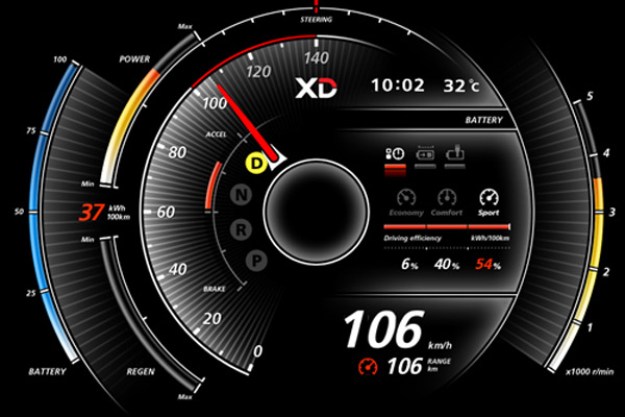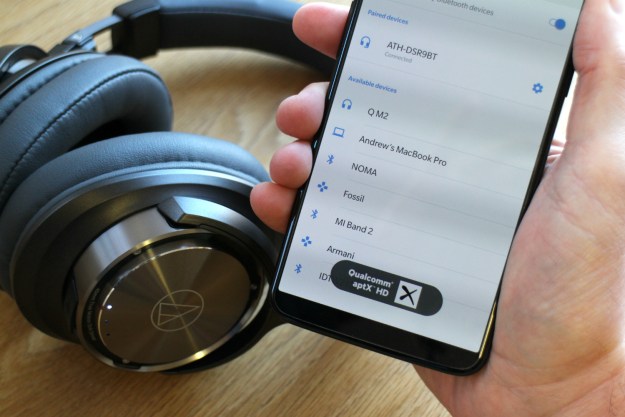
- Solid bass that doesn’t get in the way
- Dynamic and revealing high-end
- Great battery life
- Easy connectivity
- Responsive touch controls
- Build quality could be better
- Poor sound isolation
- No hard case
Alongside its famous cables, and hordes of other products, Monster makes in-ear, over-ear, and on-ear headphones in wired and wireless formats, with prices and designs that range from outright flashy to sparse and subdued. Somewhere in the eye of this audio hurricane lies audiophile-turned-“Head Monster” Noel Lee, a man who prides himself on delivering high-quality sound to the masses.
Tuned by the man himself, Monster’s new Elements Wireless Over-Ear headphones ($350) can be seen as a telling barometer of the company’s place in the 2016 marketplace. What better way to get to know the brand’s status than to take a look at its flagship over-ear headphones? The Elements come off like an American muscle car of sound; while they lack the sleek looks and build quality of some European rivals at their price point, they more than keep up (and in many ways outshine) many competitors in performance.
Out of the box
The Elements arrive in a black, five-sided case that resembles a high-end shoebox, with a magnetic pull tab on the far right side that unfurls the outer shell to reveal the product within. Inside lies a letter from Noel Lee congratulating you on your purchase, alongside a soft case nestled in thin, molded plastic. Inside the case you’ll find the Elements, a micro USB charging cable, ¼-inch adapter, and a medium-length 3.5mm cable, along with a cloth to wipe off any grease or dirt — especially handy if you opted for the Elements’ supremely flashy, rose gold finish (our review unit was the decidedly less-shiny “black slate” option).
While this is a relatively standard unboxing experience for high-end headphones — right down to the letter telling you what a genius you are for purchasing them — it is not a particularly noteworthy one. Still, everything is all here, and once you get the Elements out of the package you’ll likely relegate the box to some dark closet shelf, where it will hide until moving day.
Features and design
As we’ve alluded, the Elements are on the flashier end of the headphone spectrum, with big shiny earpieces that all but shout out to passers-by. That’s especially true in the rose gold color, which offer a flashy headband with the Monster logo painted on top. Conversely, the slate model sports matte-black plastic with tiny grey specs that leave behind much of the shimmer. Whichever finish you choose, the Elements are in no way discrete, offering a streetwear aesthetic that over-ears are increasingly embracing to satisfy younger listeners.
Depite striking aesthetics, the overall build quality leaves something to be desired.
Despite striking aesthetics, the overall build quality of the headphones leaves something to be desired. While the lower earphone sections feel solid and robust, the plastic of the upper headband feels flimsy, giving a somewhat disconcerting rattle when the
Build-quality issues aside, the comfort provided by the memory foam of the Elements’ leather-clad pads, coupled with a soft rubber pad on the headband, is ample. The Elements are easily listenable for hours, with very little headband fatigue. Sound isolation, though, is remarkably poor for an over-ear option above $300 — public transit and office ambiance easily bleeds into the mix with music at a comfortable level.
Controls and inputs, including the on-off switch, micro-USB charging port, and connectivity light are easily located on the Elements’ right earpiece (the correct orientation of the headphones is notated inside each earcup). The
The headphones are also relatively impressive on the battery front; They boast 24 hours of runtime at moderate volume, with 20 days of standby time. We didn’t time the exact life of the battery during our tests, but we did get an hour or two beyond the manufacturer-recommended 20-hour break-in period, so they seem to be at least close to Monster’s estimate.
Bluetooth wireless connection is consistent and quiet, allowing for about 50 feet of range around corners, and slightly more at line-of-sight.
Setup
Connecting the Elements is easy. Pressing the power button turns on a light on the exterior of the right earphone, and the headphones quickly show up for sync with any Bluetooth-enabled device. A digital voice lets you know when they’re connected or disconnected.
Unlike most
Audio performance
The Elements offer multiple ways to listen, including (of course) going wireless, plugging in via a standard 3.5mm cable, or listening via the micro-USB digital audio cable. We didn’t notice a significant difference in audio quality between the three, and spent most of our time using the Elements as most people likely will, via Bluetooth.
The Elements are easily listenable for hours, with very little headband fatigue.
Apart from those options, the best way — by far — to listen to the Elements is in Club mode. Rather than converting the headphones into common bass-blasters, this profile only slightly boosts the low-end, while also increasing low-mid response. Both sound modes offer a revealing and exciting upper register, providing plenty of definition to cymbals and acoustic guitars. But Club mode invigorates the Natural mode’s disappointingly sterile low end, adding a warmth that we absolutely could not do without in our evaluation. In Club mode, the Elements transform to a pair of cans well-suited to all genres, and easily compete to be among the cleanest
Tape-recorded songs like Elliott Smith’s No Name #1 become so smooth they feel like they should be savored in front of a fireplace, and heavier-hitting hip-hop fare like Run The Jewels’ Oh My Darling Don’t Cry demonstrate the headphones’ extremely wide and well-separated soundstage. Each element of the sound is just where it needs to be, with vocals sitting right atop a river of sub-bass, and quirky stereo interludes peaking around the corners of the sound.
It does feel odd to recommend a headphone that comes in a shiny rose gold finish be set to Club mode for jazz-nerd deep cuts, but here we are: Tenor player Joshua Redman’s funky and odd-metered 2002 single Jazz Crimes is a downright joy to listen to on the Elements, as are many other classic records in the genre.
Our Take
The Monster Elements Wireless Over-Ear are a solid option for those looking for street-styled headphones without overtly bass-laden sound. While we wish the sound mode options were better laid out, the headphones’ easy connectivity and solid battery life make up for it.
Is there a better alternative?
Those who are looking at flashy wireless over-ears like the Monster Elements are probably also considering streetwear-styled options like the Beats Studio Wireless or Sennheiser Urbanite XL Wireless among others, both of which are worthy competitors for different reasons, but neither of which explicitly outgun the Elements.
How long will it last?
The build quality of the Elements does leave something to be desired, but as long as you aren’t the sort who mistreats your expensive gear, they should last for some time to come.
Should you buy it?
Yes. If you are looking for a flashy pair of headphones for all genres of modern music, the Monster Elements Wireless Over-Ear are well worth considering. Great sound supplemented with excellent controls, easy syncing, and multiple source options adds up to a versatile pair of
Editors' Recommendations
- The best open-ear earbuds and headphones for 2024
- Best wireless speakers for 2024: Sonos, JBL, KEF, and more
- JBL upgrades its 2024 wireless headphones with massive battery life
- Huawei joins the open-ear trend with its FreeClip wireless earbuds
- Klipsch cranks up the karaoke with its first wireless party speakers










